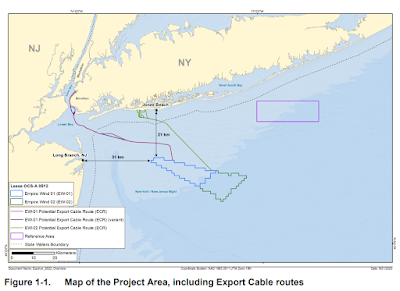Navigating the Currents of Concern: Electromagnetic Fields and Marine Life in the New York-New Jersey Region
In the waters surrounding New York and New Jersey, we have witnessed over a decade of undeniable positive feedback regarding the relationship between certain migratory fish species and electromagnetic fields (EMF). Two striking examples are the Hudson River and Raritan Bay, historic spawning and migratory egress locations for various species including striped bass, American eel, American shad, alewife, blueback herring, Atlantic long-nosed sturgeon, as well as marine mammals like humpback whales, Atlantic bottlenose dolphins, and several species of sea turtles.
Raritan Bay and the Hudson River host 660-megawatt (MW) submarine transmission cables, one since 2007 and the other since 2013. These high-voltage cables, alongside an array of telecom and undersea cables, crisscross the waters, yet marine life continues to thrive. It's an astonishing sight to behold—these vibrant ecosystems coexist with the infrastructural marvels beneath them.Note that both submarine cables used in these projects are
remarkably like the cables planned for transmission of power from the offshore
wind projects planned in the New York Bight. Both are heavily insulated, triple
wound to reduce EMFs. These projects also used a water-powered “jet plow”
device for burying the cables 6 feet beneath the seabed, which further diminishes
the EMF levels to a barely detectable level. The ecosystem effects of using
this method have been proven worldwide as temporary and safe. In fact, fish
have been observed feeding in the wake of the jet plow, and other creatures have
been seen during post-installation inspections to have made a home directly
over the cable lay.
Three major factors determine the exposure of marine organisms to magnetic and induced electric fields from undersea power cables: the amount of electrical current being carried, cable design, and distance from the cable. Fish species, including electro-sensitive and magneto-sensitive varieties like elasmobranchs (rays), eels, and sturgeons, possess specialized sensory organs to perceive electric and magnetic fields, crucial for prey detection, predator avoidance, and migration navigation.
Over the past decade, we have witnessed a drastic increase in the recreationally important striped bass population in this very area. These fish are referred to as anadromous, meaning they live in the salt, but must migrate to freshwater headwaters to spawn. The upper reaches of the Raritan River and the Hudson River are considered natal waters and to reach them, these fish had to swim directly over the cables to do this. This would hold true for several other vital and declining species like alewife and blueback herring and American shad. This success is a clear example of EMFs having a ZERO effect or blockage of egress to spawning areas.Another critically important recreational and commercial fish, the Summer flounder, a flatfish that lives directly on the bottom returns from its winter grounds offshore and crosses the cable areas each spring to the warmer waters of the back bays and feed. This is yet a perfect example of a species that lives in harmony with the submarine cables in our area.
Another remarkable thing has occurred over the past decade
regarding a specific forage species in the area called Atlantic menhaden
(bunker). Due to conservation efforts and cuts in harvest, these critical baitfish
have returned to this area in record numbers. Because of this, the past decade
has seen a drastic increase in the number of humpback whales and bottlenose
dolphins (that feed upon the massive schools of bunker) in the same area, right
on over the submarine cable areas, and clearly would not choose to remain here
if, in fact, the EMFs were a negative factor.











Comments
Post a Comment